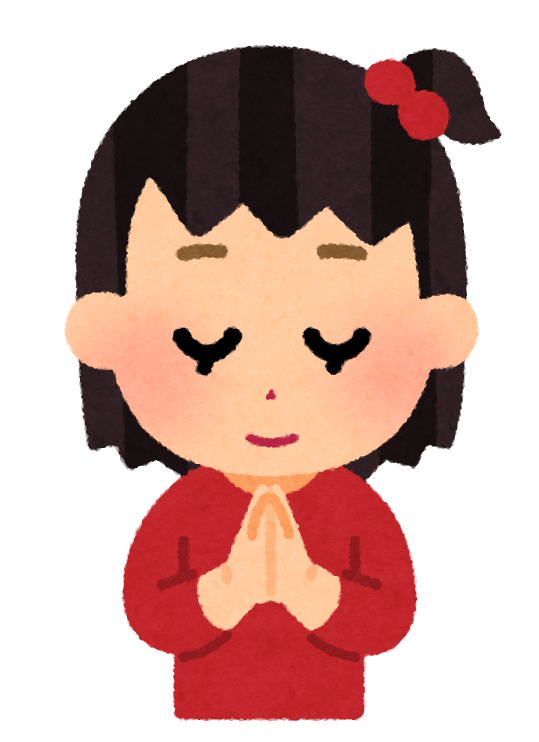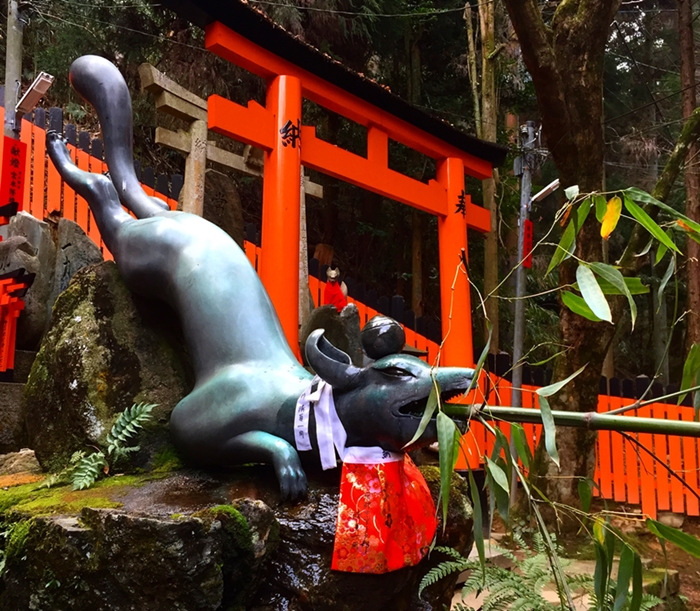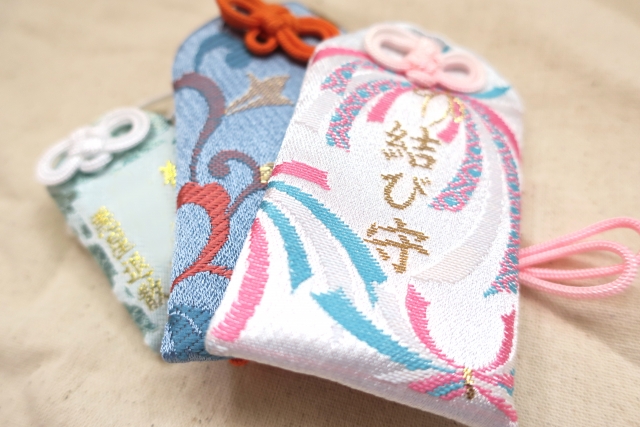CONTENTS
Introduction
Hey there! Planning your first trip to a Japanese shrine? Get ready for an unforgettable experience! Japan is home to thousands of shrines that serve as a doorway to ancient traditions and a deep-rooted culture. But before you embark on this adventure, there are a few things you need to know. Firstly, shrines are not just tourist attractions, they hold great significance in Japanese culture and religion. To show respect, make sure to follow the correct etiquette when entering the shrine. These customs include washing your hands and mouth with water from the basin called "temizuya", bowing respectfully to the shrine, and taking off your shoes when entering. Secondly, each shrine has its own unique features and traditions. Some famous ones include the Meiji Shrine, Sensoji Temple, and Fushimi Inari Shrine. It's worth doing some research beforehand to find the one that interests you the most. Lastly, don't forget to purchase some souvenirs and omamori, translated as good luck charms. Omamori can be found in various types, from health to love and career success. These charms make for perfect souvenirs, and who knows, maybe they will bring you luck in the future! Now that you have a better idea of what to expect, let's dive in deeper and explore the fascinating world of Japanese shrines.
History of Shrines in Japan

Introduction: Japan is known for its rich cultural heritage, and its shrines are a testament to the country's history and traditions. Shrines are an essential part of Japanese culture, and they are visited by locals and tourists alike. However, if you're visiting a shrine in Japan for the first time, you might be unsure about the etiquette and customs involved. In this article, we'll provide you with some tips and tricks for first-time visitors to Japanese shrines. History of Shrines in Japan: Shrines have a long history in Japan and were originally used to worship the gods of nature. The practice of building shrines dates back to prehistoric times, and there are even some shrines that were built over 2,000 years ago. In the 8th century, the religion of Shintoism emerged, which placed a significant emphasis on the worship of spirits called "kami." Shrines became the focal point of this religion, and the practice of visiting and worshipping at shrines became widespread. Shintoism is the indigenous religion of Japan, and it has played a significant role in shaping the country's culture and traditions. Buddhism also came to Japan in the 6th century and became closely intertwined with the practice of Shintoism. As a result, many shrines in Japan have both Shinto and Buddhist elements, and visitors can see a unique blend of the two religions. Today, there are over 80,000 shrines in Japan, and they continue to hold an important place in Japanese culture. Etiquette for Visiting Shrines: When visiting a shrine in Japan, there are several customs and practices that you should be aware of: - Paying Respect: Before entering a shrine, visitors should bow at the torii gate, which marks the entrance to the shrine. This is a sign of respect towards the gods and the sacred space. - Washing Hands and Mouth: Often, there will be a water basin near the entrance to the shrine. Visitors should use this water to purify their hands and mouth before entering the shrine. - Taking off Shoes: Many shrines in Japan require visitors to take off their shoes before entering. Visitors should also make sure to wear socks, as it is considered rude to enter a shrine barefoot. - Photography Etiquette: While photography is generally allowed at shrines, visitors should be respectful and not take photos of other people without their permission. It is also considered disrespectful to take photos of the main shrine building or the sacred objects within. Famous Shrines to Visit: If you're planning a trip to Japan, there are several famous shrines that you should visit: - Meiji Shrine: Located in Tokyo, Meiji Shrine is dedicated to Emperor Meiji and Empress Shoken. The shrine is surrounded by a beautiful forest and is a great place to escape the busy city. - Sensoji Temple: Located in Tokyo's Asakusa neighborhood, Sensoji Temple is one of Japan's oldest and most famous temples. The temple is known for its iconic Kaminarimon Gate and vibrant Nakamise shopping street. - Fushimi Inari Shrine: Located in Kyoto, Fushimi Inari Shrine is dedicated to the god of rice and sake. The shrine is most famous for its thousands of bright red torii gates that line the hiking trails up the mountain. - Izumo Taisha Shrine: Located in Shimane prefecture, Izumo Taisha Shrine is one of Japan's oldest and most important shrines. The shrine is dedicated to the god of marriage, and it is said that all of Japan's gods gather here once a year to discuss their plans for humanity. - Todaiji Temple: Located in Nara, Todaiji Temple is home to Japan's largest Buddha statue, which stands at over 15 meters tall. The temple is also surrounded by beautiful gardens and wildlife, including the famous Nara deer. Shrine Festivals to Experience: In addition to visiting famous shrines, there are also several festivals throughout the year that you should experience: - Hatsumode: The first shrine visit of the year, which is usually done on January 1st or 2nd. This is a great opportunity to witness Japan's New Year celebrations and experience the traditional food and festivities. - Setsubun: Celebrated on February 3rd, Setsubun is a festival that marks the end of winter and the beginning of spring. Visitors can participate in bean throwing ceremonies and watch performances by local artists. - Shichi-Go-San: Celebrated on November 15th, Shichi-Go-San is a festival that celebrates the growth and well-being of young children. Families often visit shrines to pray for their children's health and prosperity. - Tanabata Matsuri: Celebrated on July 7th, Tanabata Matsuri is a festival that celebrates the meeting of two lovers, who are represented by the stars Vega and Altair. Visitors can write wishes on colorful pieces of paper and hang them on bamboo trees. - Gion Matsuri: One of Japan's most famous festivals, Gion Matsuri is held annually in Kyoto during the month of July. The festival features beautiful floats, traditional music and dance performances, and an enormous street party. Souvenirs and Omamori: Before leaving a shrine, visitors can purchase souvenirs and omamori, which are good luck charms. Omamori come in a variety of shapes and sizes and are said to provide protection and good fortune. Some popular souvenirs include Shinto-style temari balls, Daruma dolls, and senjafuda (small wooden plaques where visitors can write their wishes and prayers). Conclusion: Visiting a shrine in Japan can be a fun and enlightening experience. By following the customs and practices outlined in this article, you can show respect towards the gods and the sacred space. With so many famous shrines and festivals to experience, you're sure to have a memorable trip that you'll never forget.
Etiquette for Visiting Shrines

Introduction: Japan is home to some of the most beautiful and historical shrines in the world. If you're a first-time visitor, it's important to know the proper etiquette when visiting these cultural and religious sites. In this article, we'll discuss do's and don'ts of visiting Japanese shrines so that you can show your respect while enjoying your experience. Etiquette for Visiting Shrines: When visiting a shrine, it's important to remember that you are entering a sacred space. Showing respect is key. Here are some things to keep in mind: Paying respect: As you enter the shrine area, bow once at the torii gate to show respect to the gods. You may also bow after offering a coin and saying a prayer. Remember to keep quiet and avoid using loud voices or disruptive behavior. Washing hands and mouth: Before paying your respects, purify yourself by washing your hands and mouth at the chozuya, the water basin. Fill the scoop with water from the basin and wash your left hand, then your right. Next, put water in your left hand, and rinse your mouth. Taking off shoes: In Japan, it's customary to take off your shoes before entering someone's home, most traditional Japanese restaurants, and shrines or temples. Look out for signs in English that say "please take off your shoes" or follow the locals. Make sure to wear clean socks or stockings, and avoid walking barefoot. Photography etiquette: When taking pictures, avoid photographing the main altar and any worshipper that may be praying. If you're unsure, follow the signs or ask an employee for help. Be respectful of others who may be praying or enjoying the scenery. Remember that the above guidelines are just the tip of the iceberg when it comes to showing respect while visiting Japanese shrines. Be sure to observe others around you and follow their lead. Conclusion: Visiting a shrine in Japan is an amazing experience and a chance to learn more about Japanese culture and religion. By following the above etiquette tips, you'll be sure to show your respect and make your visit a memorable one.
Famous Shrines to Visit

So you've decided to visit Japan and experience its rich culture and history. Well, no trip to Japan would be complete without a visit to its famous shrines. Japanese shrines have a unique architecture and are an important part of the country's tradition and religion. In this section, we will discuss the key points about the famous shrines you must visit during your trip to Japan. Meiji Shrine is a must-visit shrine, situated in Tokyo's Shibuya district. This shrine is dedicated to Emperor Meiji and Empress Shōken, who ruled Japan during the late 19th century. As you enter the shrine, you will notice a long pathway surrounded by a dense forest leading up to the main hall. It's a peaceful walk and allows you to enjoy the tranquil atmosphere. Once you reach the main hall, you will witness the stunning architecture and intricate details of the shrine. If you're lucky, you might even witness a traditional wedding ceremony as many Japanese couples choose Meiji Shrine as their wedding venue. Sensoji Temple is another famous shrine located in Asakusa, Tokyo. This temple is dedicated to the Bodhisattva Kannon, also known as Guanyin in Chinese Buddhism. The temple's main attraction is the Kaminarimon, which is a large gate guarded by two fierce-looking statues. As you enter through the gate, you will notice a long street lined with souvenir shops and food stalls, leading up to the main hall. The main hall has an impressive golden dragon that adds to the temple's beauty. Fushimi Inari Shrine is a unique shrine located in Kyoto that is famous for its thousands of torii gates. These gates lead you to the shrine's main hall, situated at the top of a mountain. The hike up the mountain can be a little strenuous, but it's all worth it once you reach the top. The view from the top is breathtaking and provides a glimpse of the stunning Kyoto landscape. Izumo Taisha Shrine is located in Shimane, and it's dedicated to the god of marriage and relationships. It's a popular shrine for Japanese couples who wish to pray for a happy marriage. The shrine is one of the oldest in Japan and has been designated as a national treasure. The shrine's main hall has an impressive thatched roof and a beautifully landscaped garden. Todaiji Temple is located in Nara, and it's one of the largest wooden buildings in the world. The temple is home to Japan's largest Buddha statue, Daibutsu. As you enter the temple complex, you will see deer wandering around, which are considered sacred in Japan. The temple also has a museum that displays many historical artifacts related to the temple's history. Visiting these shrines will give you a glimpse of Japan's rich history and culture. Make sure to wear comfortable shoes as there is a lot of walking involved. Also, be respectful of the shrine's rules and customs, such as taking off your shoes before entering the main hall and refraining from taking pictures in certain areas.
Shrine Festivals to Experience

Shrine Festivals to Experience: Japan is famous for its numerous festivals, many of which are connected to shrines. These festivals offer visitors a fascinating glance into Japanese culture, history, and religion. One of the most important festivals is Hatsumode that takes place in the first few days of January. This New Year's celebration is marked by visits to the shrines to pray for blessings for the upcoming year. You'll encounter crowds of people, food stalls, and beautiful decorations that create a lively atmosphere. Setsubun, which falls on the 3rd or 4th of February, is another popular shrine festival. It marks the beginning of spring according to the old lunar calendar. Participants throw beans at people dressed as oni (monsters) to ward off evil spirits and bring good luck. Shichi-Go-San, meaning Seven-Five-Three, is celebrated on the 15th of November. This festival celebrates the growth and well-being of young children who are now 7, 5, or 3 years old, and families visit shrines together to pray for their children's health, education, and future. Tanabata Matsuri, the Star Festival, takes place on the 7th of July. The tale behind the festival is about two lovers, Orihime and Hikoboshi, who can only meet once a year, so people write their wishes on strips of paper and hang them on bamboo trees at shrines. Finally, the Gion Matsuri is one of the most famous festivals in Japan. It takes place in Kyoto in July and features stunning parades of floats decorated with intricate art and displayed throughout the city. This festival has over a thousand years of history and is a true spectacle that visitors should not miss. In conclusion, there are many festivals that take place at shrines in Japan, each with its own unique history and tradition. From the vibrant Hatsumode to the exquisite Gion Matsuri, these festivals provide visitors with an insight into Japanese culture and should be on your bucket list. Don't forget to join the locals as they celebrate!
Souvenirs and Omamori

Omamori, the Japanese amulets, are a great way to bring luck, good health, and prosperity into your life. These sacred objects, made from various materials, including paper, wood, metal or cloth,are believed to hold spiritual powers that can protect you from harm and bring you blessings. So, if you're planning to visit a Japanese shrine, buying an Omamori is a must-do activity. Omamori are available in many types, each with its own purpose. Some common types of Omamori include "Kanai-Anzen" for car protection, "Koutaisan" for good grades, and "En-Musubi" for marriage. Since these Omamori are available in limited quantities, it is important to choose the right one based on your current requirements. So, don't rush and take your time in selecting an Omamori that is perfect for your needs. If you're looking for the most popular souvenirs to take back home, try to look for Omamori emblazoned with the image of the particular shrine. Many shrines also sell lucky charms, incense sticks, prayer beads and other religious items, so you can find what you need to bring the blessings of the shrine with you. It is important to remember that Omamori, just like the shrines, must be treated with respect. Do not throw them away once they expire, but return them to the respective shrines so that they can be disposed of in the appropriate manner. In conclusion, buying an Omamori is a great way to bring good luck and blessings into your life. Take your time in selecting the right one that fits your needs, treat them with respect, and don't forget to return them to the respective shrine once they've expired. So, make sure to get your hands on one the next time you visit a Japanese shrine!
Conclusion
Congratulations on making it to the end of the article, you're now a shrine-visiting expert! Remember, visiting a shrine in Japan is more than just sightseeing - it's an opportunity to experience the unique culture and beliefs of the Japanese people. To sum up, we discussed the history of shrines in Japan and learned about the early origins, Shintoism, and Buddhism in Japan. We also talked about the proper etiquette for visiting shrines, including paying respect, washing hands and mouth, taking off shoes, and photography etiquette. We highlighted some of the famous shrines to visit, including Meiji Shrine, Sensoji Temple, Fushimi Inari Shrine, Izumo Taisha Shrine, and Todaiji Temple. Make sure to experience some of the shrine festivals, such as Hatsumode, Setsubun, Shichi-Go-San, Tanabata Matsuri, and Gion Matsuri, and don't forget to buy some souvenirs and Omamori to remember your visit. Always remember to respect the traditions and customs of Japan, and you will have an unforgettable experience. Thanks for reading, and we hope you have a great time exploring the fascinating world of Japanese shrines!
